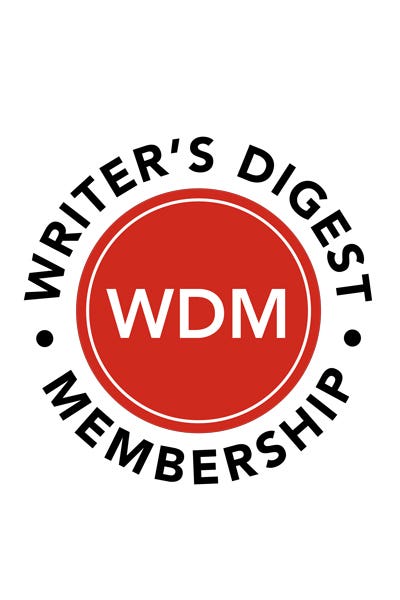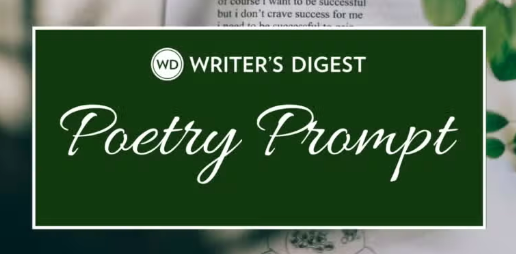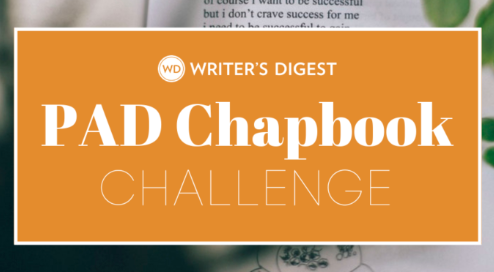Poetry, Passion, and Physics
Scientist and poet Edward Nudelman dives into the relationship of poetry, passion, and physics (and the sciences) with poetic examples.
If you ask a scientist what keeps them in the lab past midnight, you may not hear: “Answers!” It’s the jolt, the surprise of seeing a pattern where none was promised. Poetry runs on the same current. We test metaphors the same way we test hypotheses: with ruthless attention. We hope to tolerate ambiguity and the likelihood of being wrong for a long time before we’re right.
In my practice as a scientist and poet, passion can never be heat without intention. It’s an ethic of looking carefully into the ether of what is unfamiliar. Science and art both wield the same two-pronged tool: a fidelity toward experience, and a commitment to excellence and discovery. What matters to me is not simply methodology, but deliberate action that transforms bewilderment into awe.
Gravity, among the vast
and thermonuclear,
moves in silent circles—
pound for pound
the weakest force,
connecting atom and star…
Gravity has you by your feet,
but your heart remains
a secret in the sway
of cloud and pillar.¹
In this excerpt from “Earthbound,” gravity’s force is weak, but magnified to dizzying heights in the mass and pull of stars. It plants us firmly on earth, even though we pine for freedom, without constraints. But the measurable and the mystical are inseparable—both gain meaning in their association and interrelation.
Indeed, much of science deals with the clash of one entity with another, be it the probability of an avalanche rolling down a mountainside or an ion striking a detector. This is where science and art converge: Both reach for clarity through a disciplined effort of discovery. It is not about the storyteller, but rather the story itself. How well are we conveying identifiable thoughts or images to reflect upon and make sense of the world around us?
What’s envisioned in the search and the process is realized in the finding. But how do we get there? What is the essential work to be done? I believe it begins with a kind of level-headed devotion, rightly placed. Crucially, passion is not obsession. Obsession consumes, passion steadies. In the lab, passion can sometimes look like writing protocols, producing charts, or drawing conclusions that follow from accurately controlled data. This becomes passion because we offer up a bit of ourselves in the struggle, expecting greater understanding as an endpoint.
On the page, in creative mode, passion might take the form of reading poems, sending up trial balloons, and coming back days or weeks later for revision. You begin building a poem, and the shape takes hold over time through its content, music, line breaks, and cohesiveness, to name a few factors. Form in a poem, like a protocol in an experiment, need not constrain, but build on the whole. Revision becomes a love, versus endless correction. Passion shapes what it encounters, not through indulgence but through discipline: the willingness to let language, or data, or a watercolor painting reveal more than what we thought it ever could.
So how do we deal with the tedium of process? One night in my laboratory’s tissue-culture room, a control culture bloomed where it shouldn’t have. The mistake traced back to a mislabeled buffer—mine. The protocol, not my pride, saved the week’s work with a careful pH and temperature adjustment. Craft, on a page or a lab bench, keeps us honest when surprise arrives. It’s in that moment of correction, humility overtaking impulse, that the bridge between science and poetry becomes visible. Each practice relies on the tension between expectation and error, and that tension is generative—it propels both scientific inquiry and art forward.
Further considering the process, I’m struck by the tension between inspiration and dogged determination. I’ve often been thwarted by a perceived oppositional struggle between linearity and global thinking. This dialectic can inhibit freedom to move freely through the process. In the poem “Chimera”, tedium for me becomes confessional, bearing great reward in “real time:”
All that can happen in a test tube
will happen, in time’s ellipse...
I clocked each sneaking peptide
in real time, under the hum
of incandescence, or the dark cover
of a cold-room—its course a chart
of sky and dizzying canyon—
every nascent unfolding, a fresh
blueprint of skin, over a shell of steel.²
What fuels the fire? Not necessarily the vision of a favorable outcome, but the preloading: time given over to contemplation and study. Art and science foster imagination, cultivate conjecture and musing—be it an experiment in cancer cell growth, or a poem about the sorrow of great loss. Passion sustains even when discovery retreats, calls us forward, and builds endurance. The same fiery gaze that poetry demands powers progress in the sciences.
The following excerpt from “The Syntax of Stars” is not a dismissal of expertise, but a call to humility. The stars, like data, do not speak our language; we translate them into something identifiable.
We orbit the sun on our planet of particles
and wave, moving like rye in an open field.
What can’t be known can only be imagined.
But try to imagine a world without harmony,
the abstract dissonance of flux,
without losing grip on the rock wall.
I’ve strummed a palm leaf to silence
my mind’s electronic hissing, jettisoned
trigonometry in favor of a few visions
describing the lure of the commonplace.
Necessary equations await experts,
but the syntax of stars writes its epic
in a language everyone can understand.³
For me, this poem became catharsis, an unloading of rigid, sterile “fact” and an uploading of humble appreciation—a kind of “Occam’s razor” slice of a much larger pie. I have taught and trained postdoctoral fellows who were eager to learn, but more concerned with producing results than spending the needed time actually studying what needed to be done. It rarely looked like they enjoyed their work. Part of that is understandable; however, there is a way of thinking that inhibits creativity. I experienced it for years, but was fortunate to be challenged by mentors who encouraged free-floating and creative thought. From “Inertia Violated,” we can perhaps imagine ourselves to be above our limitations, yet forces are at work to derail the best-intentioned skill and craft.
It is catalogued in the book of lies.
It is stated categorically in the introduction
and nuanced in experimental method.
You are an ageless battery.
You are a perpetual motion machine.
Yet the sky, the dirt, the galaxy
red shift away from you.⁴
In fact, it is our limitations that define our efforts. Good science, like good poetry, names what remains unquantifiable after the data are in—and also admits when a result resists reproduction. We move forward in art by the quality of what we create. It’s a results-based practice, as is science… and what’s wrong with that? As long as it’s tempered by discipline and remains true to one’s passions.
I wrote “Scientific Method” in a burst of semi-clarity after taking a rest in a park, trying to capture the astonishment of the day’s discovery—the play between order and accident, observation and imagination. The poem materialized from experience and became a mirror to me of how both scientist and poet inhabit a discipline of noticing: where each insight is provisional, yet luminous.
Scientific Method
Owls in the orchestra, hooting disruption.
An old man napping on a park bench, sitting up
at dusk, puzzled by some forgotten urgency.
Through the dark network tunnels the forest mole,
solving for each blind X, as Y’s tender shoots
await a raccoon’s hungry chewing.
Sixty-six million years ago an asteroid
collides with a planet. No more stegosaurus.
You rise before the sun and hit the road,
but the traffic still thickens, and rivers run dry.
A mountain punctures a thundercloud
without an injury we can measure.
A lone hummingbird on a branch nearby
flashes iridescent in the gloaming,
toggles from one shade of red to another
like the blush of heartbeat in all things.
Loops and layers and dots, a scrim of beauty
that for a moment the old man understands.⁵
Nature performs its own experiment in symbolic language. The lab becomes a meadow; the data, a heartbeat. The poem honors serendipity—the primeval engine of both creativity and discovery. If passion honors observation, certainly a writer’s attention to detail puts words down the page more properly placed and better loaded with meaning.
If there’s a physics of passion, it likely obeys a conservation law: Energy transforms, but the work is to give it useful form. Poems and experiments surprise and bring hidden rewards—they also demand a kind of surrender, letting go of certainty for the sake of discovery. Perhaps that’s the true cost: the vulnerability of revision and changing conclusion. It’s not easy to let humility overrule, to remain open and piqued for surprise. Science, like poetry, teaches us that meaning is not possessed, but conveyed.
This little poem gestures wistfully toward a paradox that underlies much of inquiry: that even the most exact laws are written within the flux of many variables, that clarity is more often born from the ash-heap of chaos. It reminds us that understanding—whether poetic or empirical—always costs something of the self, and it’s always worth the effort.
Entropy
The word itself loses form,
as it glides out between teeth,
its consonants a dissonant tango
of tongue and lip, the mouth
barely opening, as if struggling
to spare its loss, to not surrender
whichever atom it was that glued
all the others together—
but its final syllable has left
the lips open, as a door in summer.⁶
Perhaps this is not so much an essay about cost, but about devotion. What I once thought of as labor—the repetitions of method, the endless corrections, the sleepless nights before an experiment or a presentation—may be closer to liturgy: a rhythm of attention that transforms effort into reverence. To practice science or poetry is to remain in conversation with the unfinished, to accept what refuses to resolve. The reward is not certainty but intimacy—a sense of belonging to the very processes that elude our control.
There is something of value in that intimacy. Every act of attention requires a letting go: of speed, of comfort, of the illusion that we can master what astonishes us. Perhaps passion, then, is the name for this willingness to be altered by what we study—to let the experiment, or the poem, change the observer. What begins as curiosity ends as kinship.
If science taught me to measure the world, poetry taught me to dwell in it. Together they form a single gesture: the soul reaching outward, the brain staying still long enough for the heart to catch up. I can’t say where one practice ends and the other begins; they share a common pulse. In that beat, I hear the old question—what is the cost of such work—quietly answered by passion itself. To look deeply, again and again in earnest, is not to lose oneself in detail, but to find beneath the concrete page a lyric line, a trace of the same enduring awe that began it all and keeps it moving forward.
__________________________
Notes:
¹ “Earthbound,” from “Nonlinear Equa.ons for Growing BeAer Olives” (Kelsay Books, 2023).
² “Chimera,” from “Nonlinear Equa.ons for Growing BeAer Olives” (Kelsay Books, 2023).
³ “The Syntax of Stars,” from “Nonlinear Equa.ons for Growing BeAer Olives” (2023).
⁴ “Iner.a Violated,” from “Thin Places” (Salmon Poetry, 2025).
⁵ “Scien.fic Method,” from “Nonlinear Equa.ons for Growing BeAer Olives” (2023).
⁶ “Entropy,” from “Thin Places” (Salmon Poetry, 2025).





